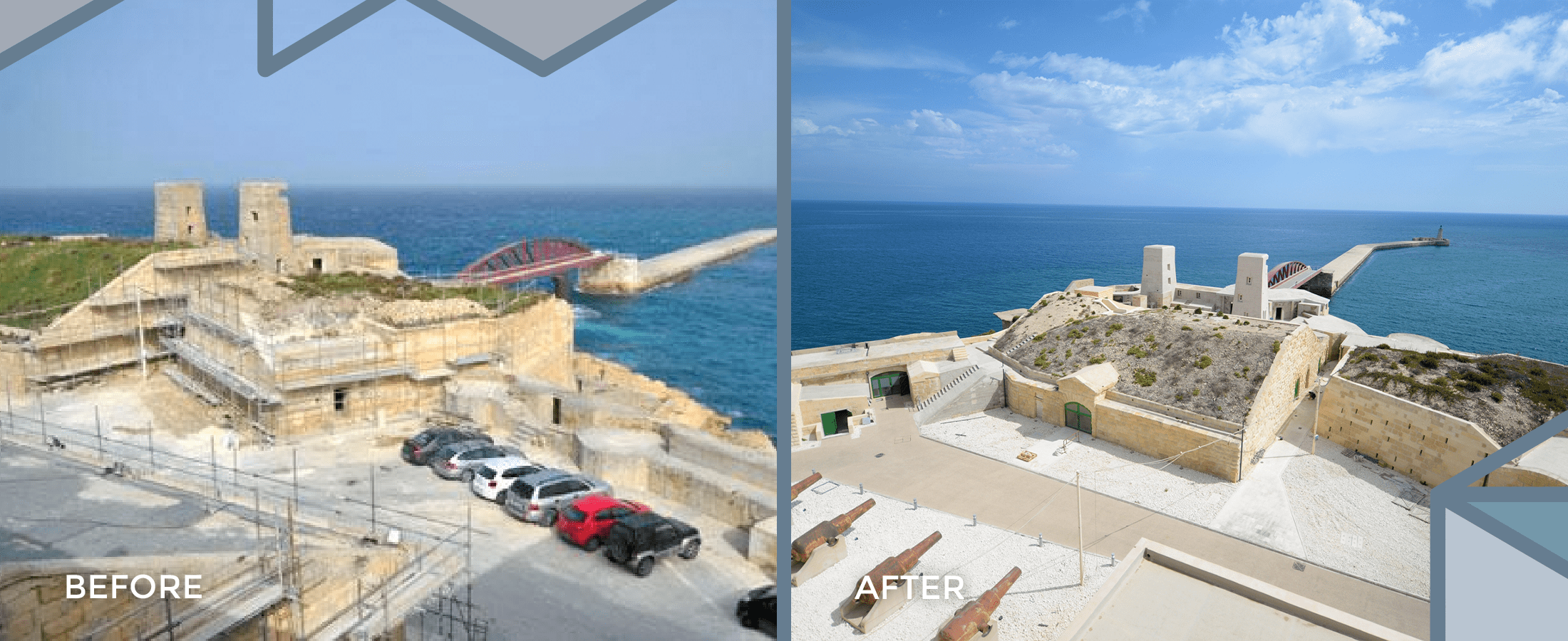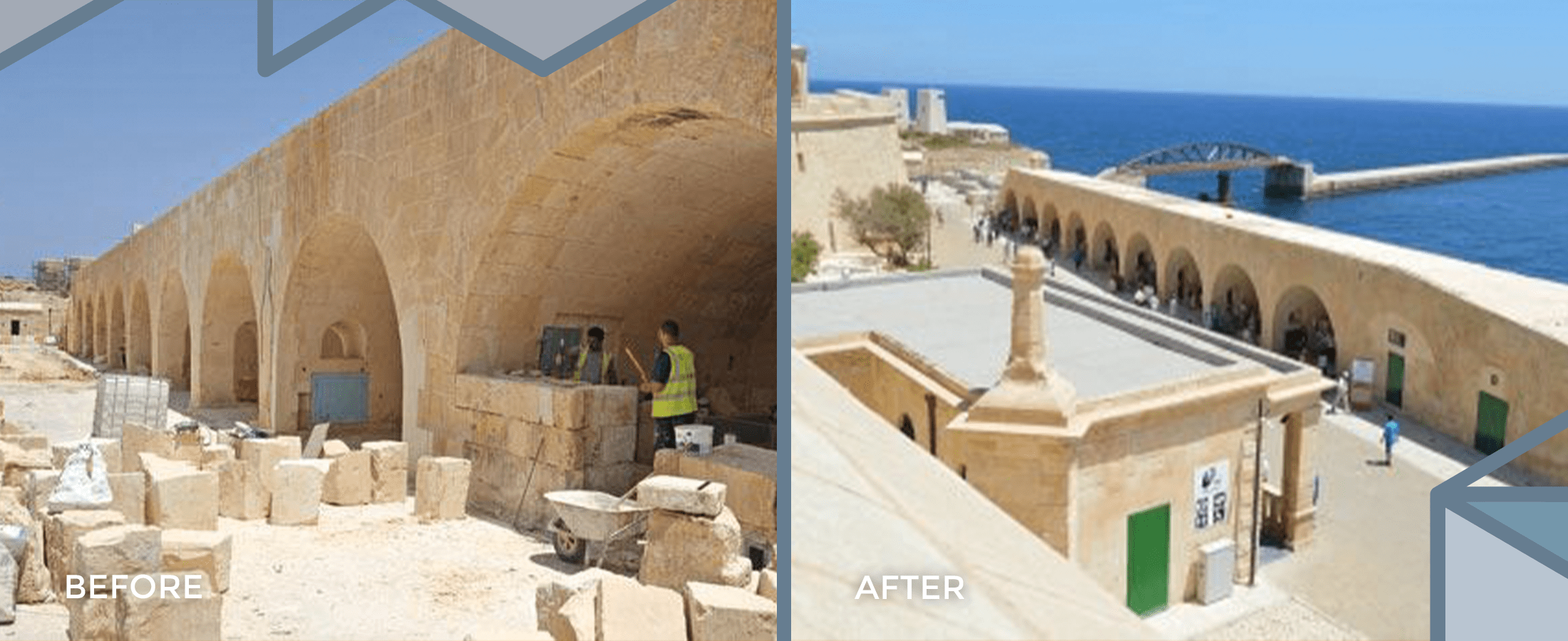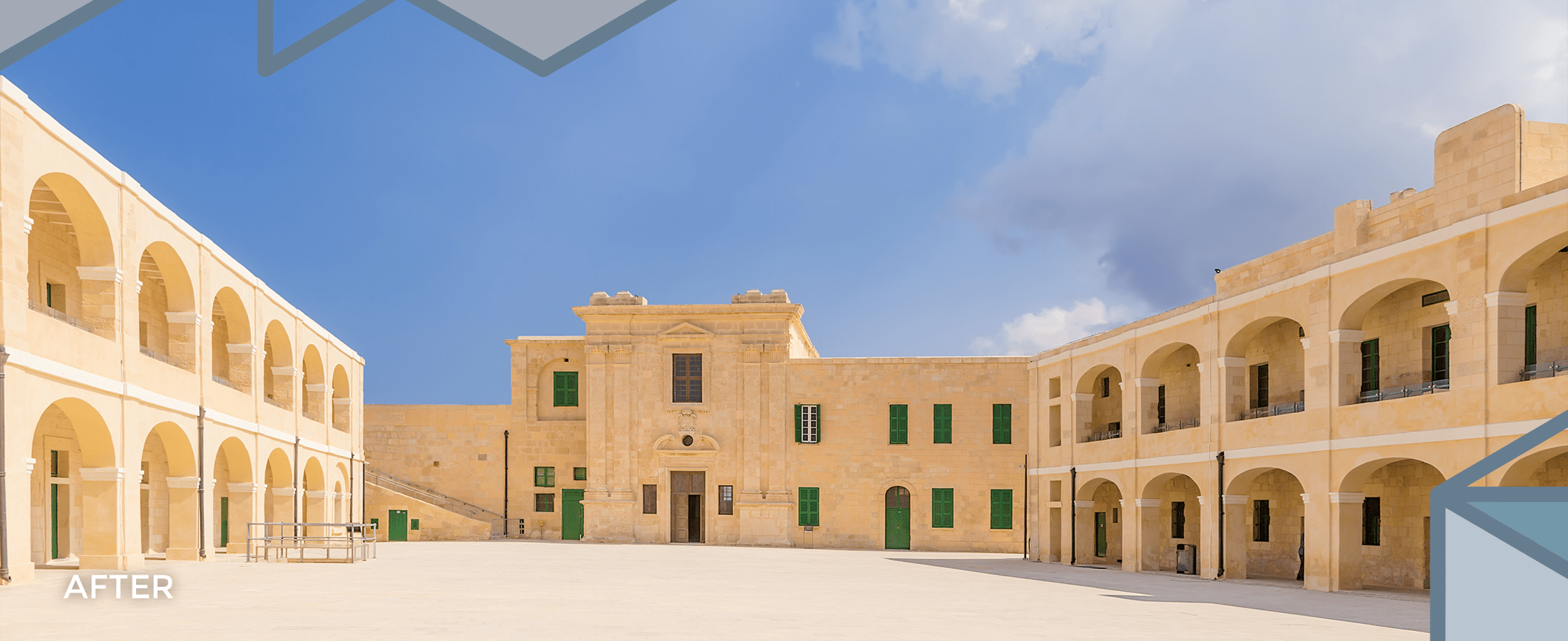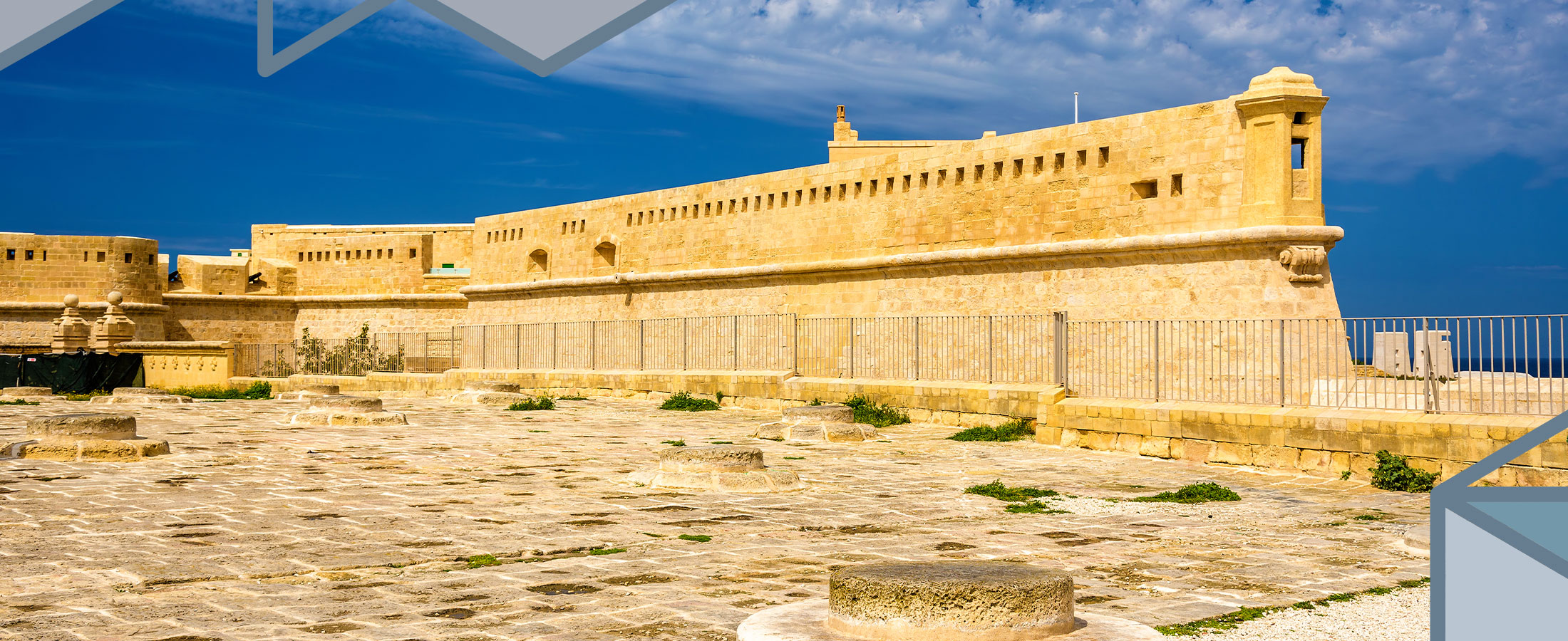Project Description
Fort Saint Elmo is a fort that stands on the seaward tip of the peninsula on which Valletta was built, between Grand Harbour and Marsamxett Harbour. The Order of St. John had built it on the site where a small tower once stood. It is one of the best-known landmarks in Malta for its role in the Great Siege of 1565. During the siege that lasted some eight months, St. Elmo was continuously bombarded by the Ottoman forces until its walls were pulverised and its defenders died to the last man defending it. After the siege and the building of Valletta, the fort was rebuilt to the design of Francesco Laparelli and strengthened with additional fortifications in later years.
The fort remained used as a barracks by the Hospitallers until Malta was occupied by Napoleon’s Army of the Orient and later as a British army barracks and armed with numerous cannons to defend the approaches of the two harbours.
During the Second World War, the fort suffered the first Maltese casualties when during an air raid, a bomb killed five soldiers of the Royal Malta Artillery. St. Elmo also played an important role in the destruction of a seaborne Italian attack on the Grand Harbour.
After the war, the fort remained serving as a barracks until the 1970s, when it was vacated and parts of the lower fort used as a film set and for the building of carnival floats.

A committee was established in 2005 between the Grand Harbour Regeneration Corporation (GHRC) and Heritage Malta regarding a master plan for the fort’s restoration. The GHRC submitted an application for funding within the 2007-2013 EU’s Regional Development Funding Programme for the restoration of the fort which totalled around €15.3 million, 85% of which came from EU funding. Works on-site began in 2011 and divided into two major phases; the restoration and finishing phase and for a new National War Museum.
The restoration varied from structural to archaeological and aesthetic works. The project site consisted of some 39,000 square meters and works focused on the barracks block and chapels around the main courtyard and the cavalier within the upper fort and the Carafa Bastions Heritage Promenade on the exterior of the fort, most of which was open spaces. The project was inaugurated on the 450th anniversary of the Great Siege in 2015.







